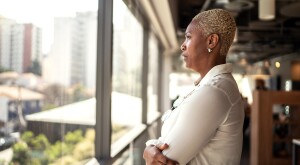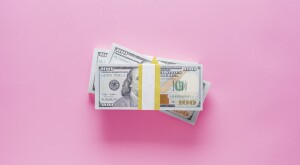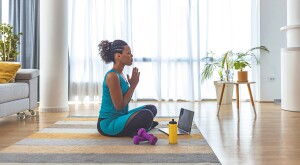From the editors: The Black community is coping with historic challenges relating to social justice, health and the economy. We’re all in this together. During this turbulent time, Sisters From AARP is prioritizing new and existing content that supports our readers’ mental, physical and economic safety and well-being, including this story. Feel free to email us at sistersletter@aarp.org and share your thoughts on how we, as Black women, can best support one another now.
“I really believe that dance is [foundational to] people recalibrating their physical health. Dance. You need to move.” —Debbie Allen
Sway. Spin. Twirl. Whirl. Bop. I have been cutting a rug since I was a toddler. While I never took actual classes as a youngster, I could turn a small, cozy space into a performance stage. Old VHS recordings show my younger self dancing like nobody's watching. In the living room, mid-dance floor at Auntie’s wedding reception, hyping up the crowd at the school pep rally, or front and center at the hottest nightclub in town. Rhythmic melodies and dope beats have always initiated movement. If there is music, best believe I am dancing.
In my 20s and early 30s, I enjoyed hip-hop, West African and Zumba offerings at the gym or community center. I danced off 40 pounds. My energy was through the roof. A huge boulder was lifted every time I finessed my body to the beat. In fact, I was so inspired by my body’s mental and physical changes, I even started teaching dance fitness a few nights per week.
And then I stopped dancing completely. Juggling parenthood and career had gotten the best of me. I had little energy or time to do much of anything. Also, in an attempt to save a few bucks, I canceled my gym membership. I felt entirely out of my element.
“I really believe that dance is [foundational to] people recalibrating their physical health. Dance. You need to move.”
It wasn’t until the COVID-19 pandemic that I began dancing again in my own living room. Since all of my daughter’s dance classes were canceled, she needed a teacher — and I had to answer the call. Instantly, I began feeling better. I was a bit sore at first, but I’ve noticed a drastic improvement in my overall mood.
Now, I look forward to shimmying my way into the next decade.
Dancing can not only be fun, it can help your health.
Dancing is considered an endurance activity, also called an aerobic activity, and it can “improve the health of your heart, lungs, and circulatory system,” according to the National Institute on Aging. It also can help delay or prevent diseases that can be common in older adults, like heart disease and diabetes. The key? Building up to at least 150 minutes of this kind of physical activity — the kind that makes you breathe hard — each week.
Dancing also can have other benefits, including helping to reduce stress, increase levels of the “feel-good hormone serotonin” and help develop new neural connections, especially in regions of the brain involved in executive function, long-term memory and spatial recognition, the Harvard Medical School reported in its newsletter.
Plus, scientists have found that “the areas of the brain that control memory and skills such as planning and organizing improve with exercise,” the Centers for Disease Control and Prevention reports. And since dancing combines exercise with music, it can be a fun way to get this physical activity.
Tinka Barnes, a family medicine physician and health and wellness advocate in Charlotte, North Carolina, says that over the last 20 years, dance has been her “outlet for stress as well as physical fitness.”
Usually dancing at home or participating in traditional West African dance classes a few times per week, Barnes also encourages many of her patients to use movement as medicine. During follow-ups, Barnes says she has found that dance not only helped patients’ physical fitness, but it greatly enhanced their moods as well.
Dance is good for you, at any age.
We know we should get moving, but only 1 in 3 adults receive the recommended amount of physical activity each week, according to the U.S. Department of Health and Human Services. Dancing can help us get there.
Before you begin a dance program, remember to check in with your health care provider. After you’ve been cleared, keep in mind that you can dance just about anywhere. And know that these kind of activities should never cause dizziness or chest pain or pressure. (If you do have these issues, or others that concern you, talk to your health care provider.)
“The beauty of dance is that it can always be done without any equipment and from the comfort of your own home. Dance is a connection to your past, present and future,” Barnes says.
You can start by creating a dance music playlist. Then, just get to steppin’ (literally). Have a dance party in the living room. Record a quick routine on TikTok (Gen Z can’t have all the fun). Or join professional choreographers in free, virtual sessions.
Whether you’re dancing at a fitness center (if it reopens) or at home, moving and grooving your body can help put you on the path to better health.









